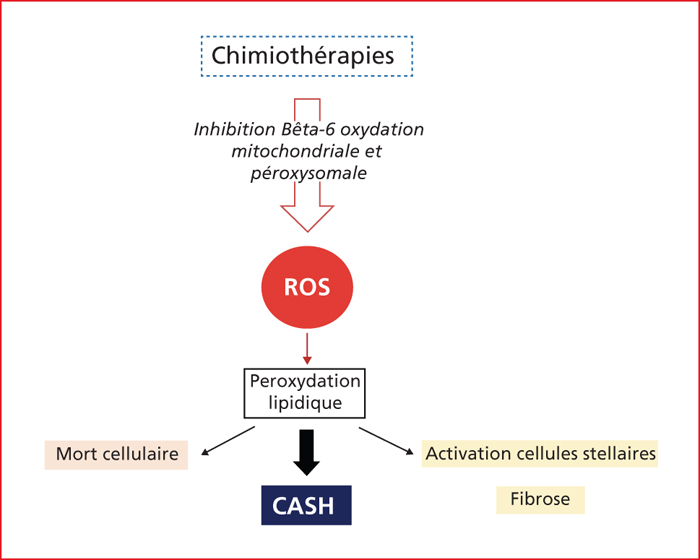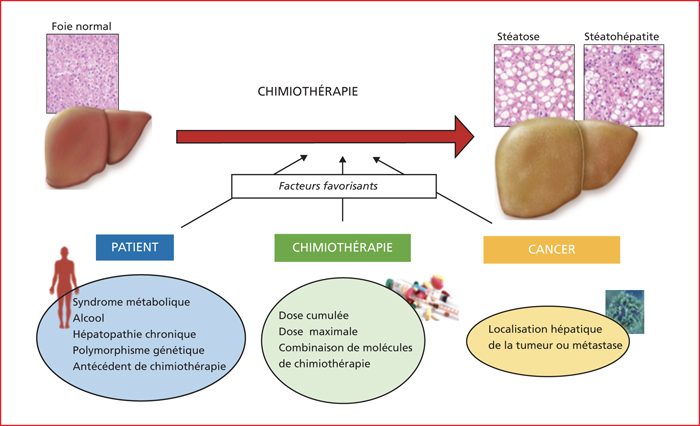Hépato-Gastro & Oncologie Digestive
MENUChemotherapy-associated steato-hepatitis Volume 26, issue 3, Mars 2019
- Key words: Chemotherapy-Associated Steato-Hepatitis (CASH), chemotherapy, hepatotoxicity, steatosis, steatohepatitis
- DOI : 10.1684/hpg.2019.1757
- Page(s) : 302-9
- Published in: 2019
Some drugs may induce hepatotoxic lesions such as steatosis or steatohepatitis like the lesions found in Non-Alcoholic Fatty Liver Disease (NAFLD). Among these treatments, there are some anti-tumoral molecules such as methotrexate, 5-fluorouracil, irinotécan, tamoxifen and L-asparaginase. This particular hepatotoxicity phenotype is called “CASH” for “Chemotherapy-induced Acute Steato-Hepatitis”. The mechanism of toxicity is essentially based on mitochondrial toxicity. These lesions are chronic and often reversible when the treatment is stopped. Contributing factors related to the patient, the disease or the treatment play a major role in the emergence of CASH. It is important to identify chemotherapies with risk of steatosis or steatohepatitis to improve the control the metabolic risk factors associated with the patient and to reinforce the monitoring during treatment. In the particular context of neo-adjuvant chemotherapy for metastatic colorectal cancer, a short duration of chemotherapy and a delay of a few weeks between chemotherapy and surgery would make it possible to reduce postoperative morbidity and mortality.
![]() This work is licensed under a
Creative Commons Attribution-NonCommercial-NoDerivatives 4.0 International License
This work is licensed under a
Creative Commons Attribution-NonCommercial-NoDerivatives 4.0 International License



